Acoustics
1.What is acoustics?
Solution:
Acoustics is the branch of physics that deals with physical phenomena involved in the transmission of sound. A source of sound is any body that can vibrate.
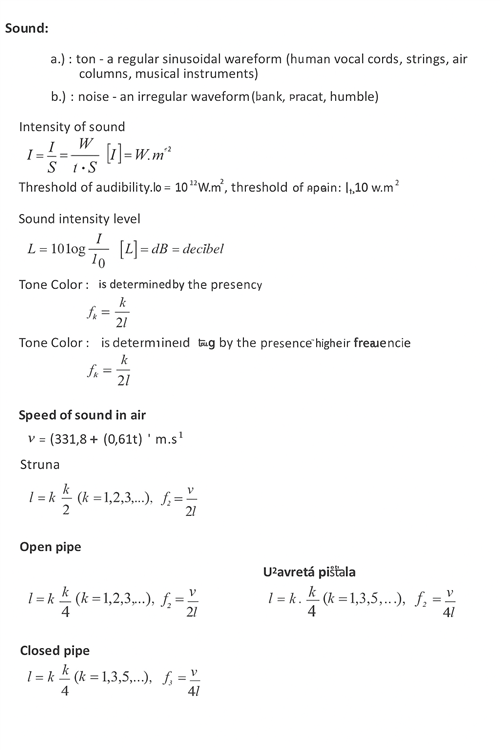
2.Calculate the speed of sound in air
- a.) at temperature t = 0o C
- b.) at temperature t = 15o C
- c.) at what temperature is the speed of sound in air v = 351.32 m·s-1? The speed of sound in air as a function of ambient temperature is given by v = 331.8 + 0.61·t (m·s-1).
Solution:
a.) t = 0
oC, v
0 = (331,8 + 0,61·0) m·s
-1 = 331,8 m·s
-1 => v
0 = 331,8 m·s
-1
b.) t = 15oC, v15 = (331,8 + 0,61·15oC) m·s-1 = 340 m·s-1 => v15 = 340 m·s-1

The speeds of sound in air are v0 = 331,8 m·s-1, v15 = 340 m·s-1.
The speed of sound in air v = 351,32 m·s-1 is reached at temperature t = 32oC.
The speed of sound in air v15 = 340 m·s-1 is used when solving problems (unless stated otherwise).
3.Calculate the wavelengths corresponding to the limits of the audible frequency range 16 Hz – 20,000 Hz. v = 340 m·s-1.
Solution:
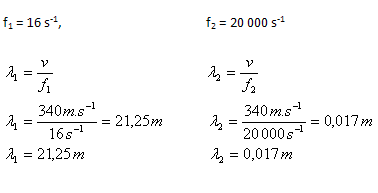
The wavelengths corresponding to the limits of audibility are 0.017 m – 21.25 m.
4.Four sea ...
- a.) On the sea surface there are two boats at a mutual distance of 11.6 km. The first sends a sound signal through the water and simultaneously a light signal above the water. The second boat receives both signals, the sound one 8 s later than the light. Determine the speed of sound in seawater.
- b.) A sailor on a boat heard thunder 10 s after he saw the flash. At what distance did the lightning strike?
- c.) Sound reflected from a pod of whales returned to the boat after 1 second. How far are the whales from the boat?
- d.) On one boat the sea depth was measured with ultrasound. What is the depth there if the reflected ultrasonic signal returned to the boat after 0.8 s?
Solution:
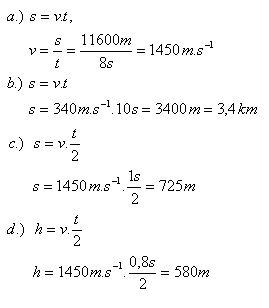
5.An observer standing at the edge of the Macocha Abyss dropped a stone into it and heard it hit the bottom after 5.6 s. Determine the depth of the abyss!
t1 – time of the stone’s fall, t2 – time of sound propagation after the impact at the bottom
Solution:
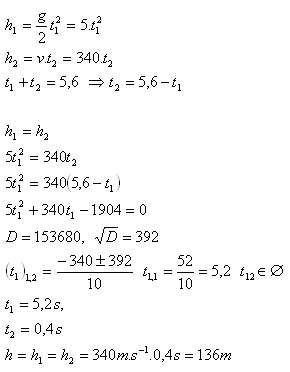
The depth of the Macocha Abyss is about 136 m.
6.If we shorten the length of a string (with unchanged tension) by 10 cm, its fundamental frequency changes by a factor of 1.5. Determine the original length of the string l.
Solution:
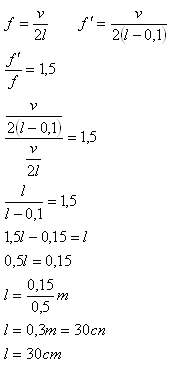
The original length of the string was l = 30 cm.
7. What length must
if they produce a tone with frequency f = 130.5 Hz at temperature t = –5oC?
Solution:
Analysis:
v = 331,8 + 0,61·t
v–5 = (331,8 + 0,61·(–5)) m·s-1 = 328,75 m·s-1
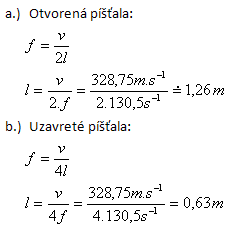
a) Open pipe
b) Closed pipe
The open pipe must be 1.26 m long, the closed one 0.63 m.
8.By how many decibels does the sound intensity level increase if the sound intensity increases 100,000 times? What will this increased intensity be?
Solution:
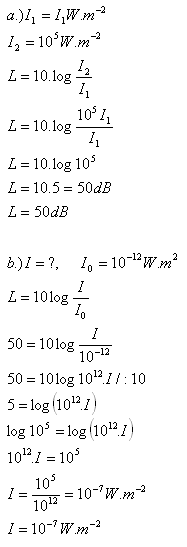
The sound intensity level increases by 50 dB.
The increased sound intensity will be I = 10-7 W·m-2.
9.What is the Doppler principle (effect)?
Solution:
The Doppler principle explains the change in the observed frequency of sound waves caused by the relative motion of the sound source and the observer.
Let v – speed of sound, u – speed of the observer,
w – speed of the sound source, f – frequency emitted by the source,
f‘ – frequency perceived by the observer.
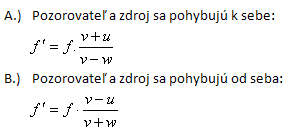
A) The observer and the source move towards each other
B) The observer and the source move away from each other
Note: Johann Christian Doppler (1803 – 1853) Austrian mathematician and physicist. He worked in Vienna, Prague, and at the Mining Academy in Banská Štiavnica (1847).
10.John
is standing by a highway along which an ambulance is moving at speed w = 20 m·s-1. The siren of the ambulance emits a steady tone of frequency 1,000 Hz. What frequency does Janko register when the ambulance
- a.) is approaching
- b.) is receding.
The air temperature is t = 20
oC
Solution:
Analysis:
v = 331,8 + 0,61·20 = 344 m·s-1, w = 20 m·s-1, f = 1,000 Hz, u = 0
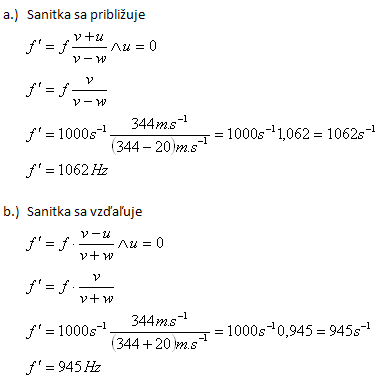
a) The ambulance approaches
b) The ambulance is driving away
John registers a frequency of 1062 Hz in the first case and 945 Hz in the second.